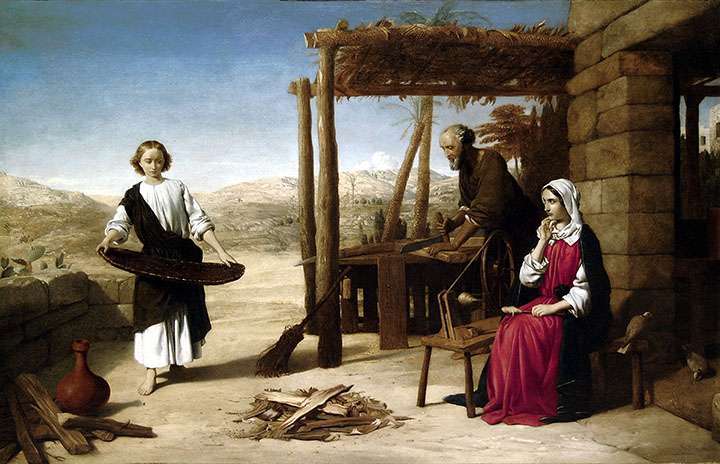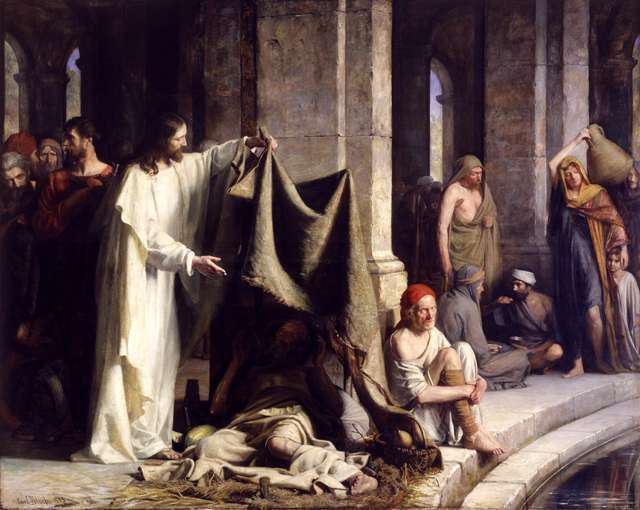It is not only in charming the eyes that works of art have achieved their end; it is in penetrating the soul, in making a profound impression on the mind, like that of reality. It is then that the traits of heroism, and of the civic virtues, offered to the eyes of the people, will electrify their souls and bring forth in them the passion for glory, for devotion to the good of the nation. The artist, therefore, must have studied all the qualities of mankind; he must have a great knowledge of nature; he must, in a word, be a philosopher.
The 19th century witnessed many changes including industrialization, the rise of the middle class, and expansion of global travel. Many government-sponsored art academies patterned after the French École des Beaux-Arts began to flourish across Europe. These national schools were designed to train artists in the proper techniques of painting, and professional members of these societies were often the judges of eagerly anticipated and highly popular annual national competitions. Our Saviour Subject to His Parents at Nazareth by John Rogers Herbert, Joseph Interpreting the Dreams of the Butler and the Baker by a close follower of Jacques-Louis David, Christ Healing the Sick at Bethesda by Carl Heinrich Bloch, and Premier Chagrin (First Grief) by Daniel Ridgway Knight are all examples of academic traditions and nationally sponsored artists. What elements of artistic style and subject matter do these paintings have in common?
John Rogers Herbert (1810–1890) Our Saviour Subject to this Parents at Nazareth
Purchased with funds provided by Jack R. and Mary Lois Wheatley

Carl Heinrich Bloch (1834–1890) Christ Healing the Sick at Bethesda
Purchased with funds provided by Jack R. and Mary Lois Wheatley

School of Jacques-Louis David (1748–1825) Joseph Interpreting the Dreams of the Butler and the Baker

Daniel Ridgway Knight (1839–1924) Premier Chagrin (First Grief)
Purchased with funds provided by Jack R. and Mary Lois Wheatley

YOU MAY NOTICE
Many artists respected by the academic institutions of their time, such as those who created Joseph Interpreting the Dreams of the Butler and the Baker and Christ Healing the Sick at Bethesda, were masters at hiding their brushstrokes. The surface of the painting appears smooth and belies the fact that individual brushstrokes were applied onto a two-dimensional surface. On the frame of Our Saviour Subject to His Parents at Nazareth by John Rogers Herbert, the initials JH, RA are on the bottom. The RA stands for “Royal Academy,” indicating the importance of this title and status in the art world.
Daniel Ridgway Knight’s Premier Chagrin (First Grief) features a pair of peasant girls seated in the French countryside. This was a quaint, popular subject in the annual Salons. Like all promising American artists of his day, Knight traveled to Paris to study with the European masters at the École des Beaux-Arts. He eventually became so successful that he never returned to the U.S. Other artists in the Museum of Art’s collection, such as John Singer Sargent, were also Americans who moved to Europe for artistic training and remained there permanently.
*Found in J.-L. Jules David, “Rapport fait au nom du Comité d’instruction publique par David sur la nomination des cinquante membres du Jury” in Le Peintre Louis David 1748-1825 (Paris: Victor-Havard, 1880). English translation Akane Kawakami in Art in Theory 1648-1815: An Anthology of Changing Ideas, ed. Charles Harrison, Paul Wood, and Jason Gaiger (Malden, MA: Blackwell Publishing, 2000).